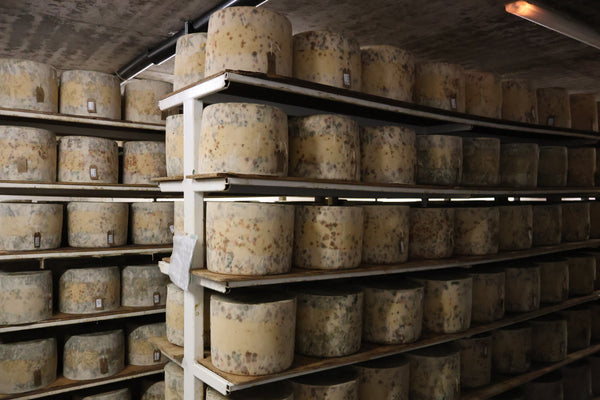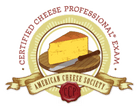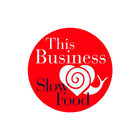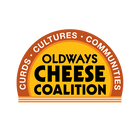People have never been more excited to know more about what I do for a living than since I started working as a cheesemonger. The word “cheesemonger” itself is enough to grab their attention: Is that a real job? Is this the 1880s? What is it that you … do? I can now say that, in addition to selling and caring for a case full of cheese every day, I get to go to summer camp.
I have been working in cheese for almost a year now, and my trip to Vermont for Cheese Camp at Jasper Hill Farm could not have been more well timed. I have become familiar with Jasper Hill cheeses through mongering; we regularly stock the case with Alpha Tolman, Cabot Clothbound Cheddar, Bayley Hazen Blue, Willoughby and Harbison. Jasper Hill cheeses have become keystones in my cheese lexicon, and are the cheeses I point to as the pinnacle of American artisan cheesemaking. I had heard lore of the farm’s dedication to raw cheese production, the mad scientist microbiologists behind their cheesemaking and affinage, and their commitment to preserving and invigorating the landscape and economy of their rural locale in the Northeast Kingdom. When Chris and Laura offered me the chance to see, quite literally, how the sausage gets made, I jumped at the chance.
Cheese Camp is a total of three immersive days of lectures and site visits at Jasper Hill, designed specifically for professional mongers. Don’t let the name fool you; while there was definitely a fair amount of swimming and picnics and campfires, the schedule was rigorous. I had an idea of the work that goes into artisan cheesemaking, but I had never seen it in person, and didn’t even know how much I have to learn.

You know you’re getting close to Jasper Hill when you lose cell service. Google Maps could only take me so far before I was bouncing down a dirt road toward the cabins at Camp Kahagon on Nichols Pond in Woodbury, VT. I was greeted upon my arrival by a rustic cabin, a beautiful view, and an elated group of fellow campers, comprised of mongers, shop owners, specialty food purveyors, and cheesemakers. Cheese Camp was the first time I got to mingle with other curd nerds, and I could tell immediately that I was in good company.

Jasper Hill’s mission to cultivate “a taste of place” is rooted in the idea that the entire environment in which a cheese is produced is responsible for how it tastes. Everything from what the animals are fed and how feed is processed, down to the microbiology of the soil and the air and the hands involved in each step of cheesemaking plays a role in what makes Jasper Hill cheese Jasper Hill cheese. The farm has invested in every aspect of cultivating this micro-terroir; I saw cows grazing on pasture, visited the Cropping Center for a tour of their state-of-the-art hay drier, and took in a lecture on herd management and the chemistry of milk.
In addition to raising cows for cheesemaking, Jasper Hill Farm has expanded to include goats and pigs. Our first day of camp began with a visit to Bridgman Hill Farm, a brand new goat farm and dairy recently established in connection with Jasper Hill. The creamery is in the process of being built, and the herd is still growing. This means goat’s milk cheeses for us, but more importantly, this partnership has brought new farmers to northern Vermont, and has presented a viable way for them to make a living. Jasper Hill seems to be good at this: finding ways to strike up collaboration with new and existing entities in order to offer a reciprocal stability and support. Another example is Jasper Hill’s collaboration with Pete’s Greens in Craftsbury, VT, a venture that has grown to include a line of salami and a brand new meat curing facility. Heritage breed pigs are fed the whey leftover from cheesemaking, and are pastured in a seasonal rotation with vegetable farmland and cropland.

The highlight of the whole experience for me was seeing the cellars. Mateo Kehler, who founded Jasper Hill Farm with his brother Andy in 2003, met us in the vault where they age the Cabot Clothbound Cheddar and spent the afternoon with us touring the cellars. I had a mythological image of what this facility might look like, and it surpassed my expectations. Each underground vault is meticulously temperature and humidity controlled, as per the ideal conditions for each style of cheese being aged. Each room has its own look and feel and smell, and the spaces are just teeming with life. I’ve never been so aware of my own microbiological makeup; even with hairnets and rubber boots, I felt like I was participating in this living, breathing terroir.

I expected to leave Cheese Camp with a greater appreciation for and understanding of how cheese is made, but I was surprised and delighted that in addition to that, I discovered a more full understanding of my work as a cheesemonger. As a monger, my point of view is at the center of the food chain. We act as the connective tissue between the producer and the consumer, and sometimes that can be an exhausting and isolating place to be. It was so validating to meet the people who work at Jasper Hill, and many of them made a point of saying how much they appreciate mongers. Without mongers, producers would just be making cheese and hoping someone buys it. Our shops have been working with Jasper Hill for so many years now that when they send us cheese, they know what wheels of cheese we will most enjoy and most be able to sell. This blew my mind, and points to the importance of relationship between the independent retailer and the small-scale producer. We each have our strengths and our specialization, but we need each other in order to keep doing the good work we’re doing.
















